Growing corn in pots might sound like a whimsical dream, conjuring images of sprawling fields rather than cozy balconies. But trust me, it’s a surprisingly achievable and rewarding DIY project! For centuries, corn has been a staple crop, deeply intertwined with the cultures and cuisines of the Americas. From ancient Mayan civilizations to modern-day barbecues, corn holds a special place in our hearts (and stomachs!).
But what if you don’t have acres of land to dedicate to this golden grain? That’s where the magic of container gardening comes in! Imagine stepping outside your door and harvesting fresh, sweet corn, grown with your own two hands. No more trips to the grocery store for lackluster ears – you’ll have the real deal, bursting with flavor, right at your fingertips.
This DIY guide is your passport to unlocking the secrets of growing corn in pots successfully. We’ll walk you through every step, from choosing the right variety and pot size to providing the perfect care and harvesting your bountiful crop. Whether you’re a seasoned gardener or a complete beginner, I’m here to show you that growing your own corn is easier than you think. So, grab your gardening gloves, and let’s get started on this exciting adventure!
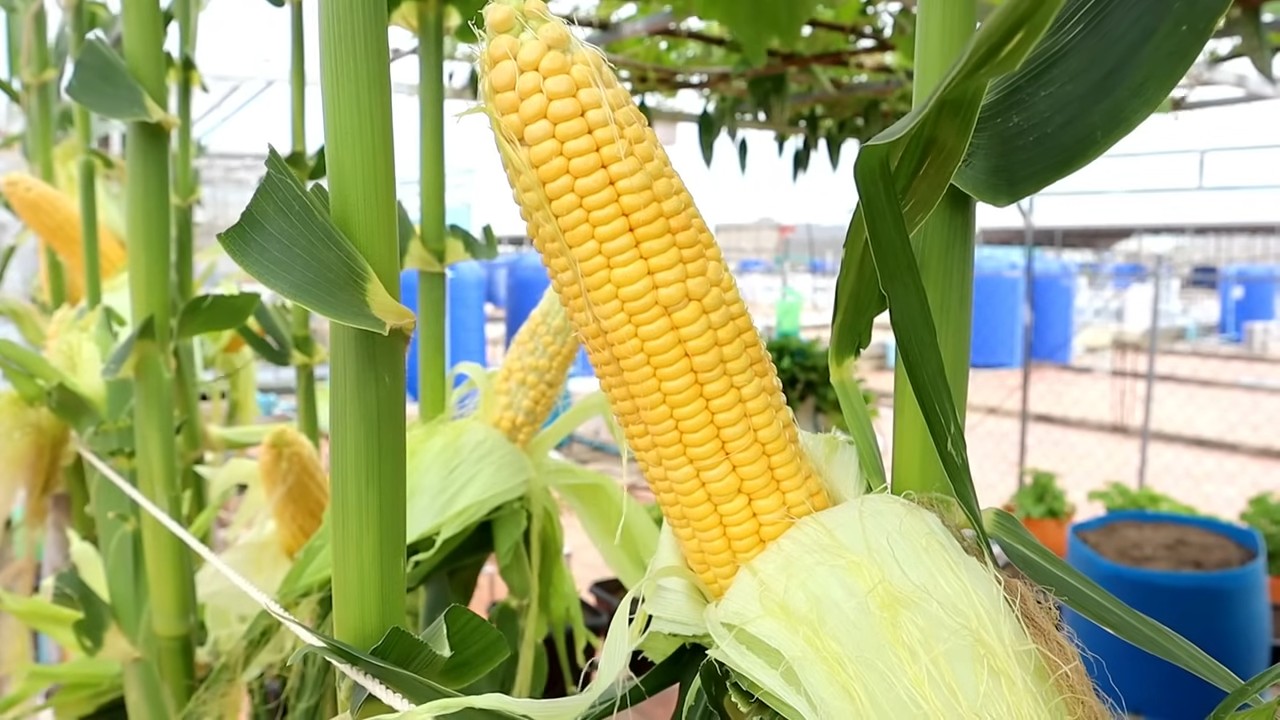
Growing Corn in Pots: A Surprisingly Simple Guide!
Hey there, fellow gardening enthusiasts! Ever thought about growing corn, but figured you needed acres of land? Well, I’m here to tell you that you can absolutely grow corn in pots! It’s a fun and rewarding project, and while you won’t be harvesting enough for a year’s supply of cornbread, you’ll get a taste of homegrown goodness and a beautiful, unique addition to your patio or balcony. Let’s dive into how to make it happen!
Choosing the Right Corn Variety
First things first, not all corn varieties are created equal when it comes to container gardening. You’ll want to choose a variety that’s shorter and more compact. Here are a few of my favorites:
* ‘On Deck’ Hybrid Sweet Corn: This is a super-sweet variety specifically bred for container growing. It’s early maturing and produces smaller ears, perfect for pots.
* ‘Golden Bantam’: An heirloom variety that’s relatively short and sturdy. It’s known for its delicious flavor.
* ‘Trinity’: Another excellent choice for containers, offering good yields and a manageable size.
* ‘Tom Thumb’ Popcorn: If you’re looking for popcorn, this dwarf variety is ideal for pots.
Remember to check the seed packet for the plant’s mature height. You’re aiming for varieties that stay under 5-6 feet tall.
What You’ll Need
Before we get started, let’s gather our supplies. Here’s a checklist:
* Large Pots: This is crucial! Each pot should be at least 12-18 inches in diameter and depth. The bigger, the better, as corn roots need plenty of space. I prefer using plastic pots because they are lighter and easier to move.
* High-Quality Potting Mix: Don’t skimp on this! Use a well-draining potting mix, not garden soil. Garden soil compacts too much in pots and doesn’t provide adequate drainage. I like to add some compost to my potting mix for extra nutrients.
* Corn Seeds: Choose your desired variety, as discussed above.
* Slow-Release Fertilizer: This will provide a steady supply of nutrients throughout the growing season.
* Watering Can or Hose: For, well, watering!
* Optional: Stakes or bamboo poles for support, especially if you live in a windy area.
Planting Your Corn
Now for the fun part! Let’s get those seeds in the ground (or, in this case, the pot).
1. Fill the Pots: Fill your pots with the potting mix, leaving about an inch or two of space at the top.
2. Sow the Seeds: Plant 3-4 seeds per pot, about 1-2 inches deep. Space them evenly around the pot. Planting multiple seeds ensures that at least one will germinate successfully.
3. Water Gently: Water the pots thoroughly but gently, making sure not to wash away the seeds.
4. Placement: Place the pots in a location that receives at least 6-8 hours of direct sunlight per day. Corn needs plenty of sun to thrive.
5. Thinning: Once the seedlings emerge (usually in about a week or two), thin them to the strongest one per pot. This ensures that the remaining plant has enough space and resources to grow.
Caring for Your Corn
Growing corn in pots requires consistent care. Here’s what you need to do:
1. Watering: Corn needs consistent moisture, especially during hot weather. Water deeply whenever the top inch of soil feels dry to the touch. Avoid overwatering, as this can lead to root rot. I usually water every other day, but it depends on the weather.
2. Fertilizing: Corn is a heavy feeder, so regular fertilization is essential. Apply a slow-release fertilizer according to the package directions. You can also supplement with a liquid fertilizer every few weeks. I like to use a balanced fertilizer, such as 10-10-10.
3. Pollination: Corn is wind-pollinated, meaning it relies on the wind to transfer pollen from the tassels (the male flowers at the top of the plant) to the silks (the female flowers that emerge from the developing ears). Since you’re growing corn in pots, you might need to help with pollination, especially if you only have a few plants. You can do this by gently shaking the plants or using a small paintbrush to transfer pollen from the tassels to the silks. I usually do this in the morning when the pollen is most active.
4. Support: As your corn plants grow taller, they may need support, especially if you live in a windy area. Use stakes or bamboo poles to provide support and prevent the plants from falling over. Tie the stalks loosely to the stakes with twine.
5. Pest and Disease Control: Keep an eye out for pests and diseases. Common corn pests include corn earworms and aphids. You can control these pests with insecticidal soap or neem oil. Diseases are less common in container-grown corn, but be on the lookout for fungal diseases like rust. If you spot any signs of disease, remove the affected leaves and treat the plants with a fungicide.
Harvesting Your Corn
Harvesting time is the most exciting part! Here’s how to know when your corn is ready:
1. Silks: The silks will turn brown and dry.
2. Ears: The ears will feel plump and full.
3. Kernels: Gently peel back the husk and poke a kernel with your fingernail. If the liquid that comes out is milky, the corn is ready to harvest. If it’s clear, it needs more time. If it’s doughy, it’s overripe.
4. Harvesting: To harvest, grasp the ear firmly and twist it downward. It should snap off easily.
Troubleshooting
Even with the best care, you might encounter some challenges. Here are a few common problems and how to fix them:
* Poor Germination: If your seeds don’t germinate, make sure the soil is warm enough (at least 60°F). You can also try soaking the seeds in water for 24 hours before planting.
* Yellow Leaves: Yellow leaves can indicate a nutrient deficiency. Fertilize with a balanced fertilizer.
* Stunted Growth: Stunted growth can be caused by a lack of sunlight, water, or nutrients. Make sure your plants are getting enough of all three.
* Pests: As mentioned earlier, keep an eye out for pests and treat them accordingly.
Maximizing Your Corn Harvest in Pots
Okay, so you’ve got the basics down. Now, let’s talk about some tips and tricks to really maximize your corn harvest when you’re growing in containers. These are things I’ve learned over the years that have made a real difference!
Choosing the Right Pot Size: It’s Bigger Than You Think!
I can’t stress this enough: pot size matters. While the minimum recommended size is 12-18 inches, going bigger will always benefit your corn. Think about it – the roots need space to spread out and absorb nutrients. A larger pot also holds more moisture, which is crucial, especially during hot summer days. I’ve found that using 20-gallon containers or even half whiskey barrels works wonders.
Soil, Glorious Soil: The Foundation of Your Harvest
We talked about using a good potting mix, but let’s delve a little deeper. I like to create my own blend to give my corn the best possible start. My go-to recipe is:
* 1 part high-quality potting mix
* 1 part compost (for nutrients and water retention)
* 1/2 part perlite (for drainage)
* A handful of slow-release fertilizer
This mix provides excellent drainage, aeration, and a steady supply of nutrients.
Strategic Planting: Grouping for Success
Corn is wind-pollinated, so planting in a block or group is much more effective than planting in a single row. This increases the chances of successful pollination and a better yield. In each pot, I aim for 3-4 plants (after thinning).
Watering Wisdom: Consistency is Key
Consistent watering is absolutely vital. Corn is a thirsty plant, especially when it’s actively growing and producing ears. I check the soil moisture every day, and if the top inch feels dry, I water deeply until water drains out of the bottom of the pot. During heat waves, I might even water twice a day.
Fertilizing Finesse: Feeding Your Corn
As I mentioned before, corn is a heavy feeder. In addition to the slow-release fertilizer at planting, I also supplement with a liquid fertilizer every 2-3 weeks. I prefer using a balanced fertilizer, but you can also use a fertilizer that’s higher in nitrogen during the early stages of growth to promote leafy growth. Once the ears start to
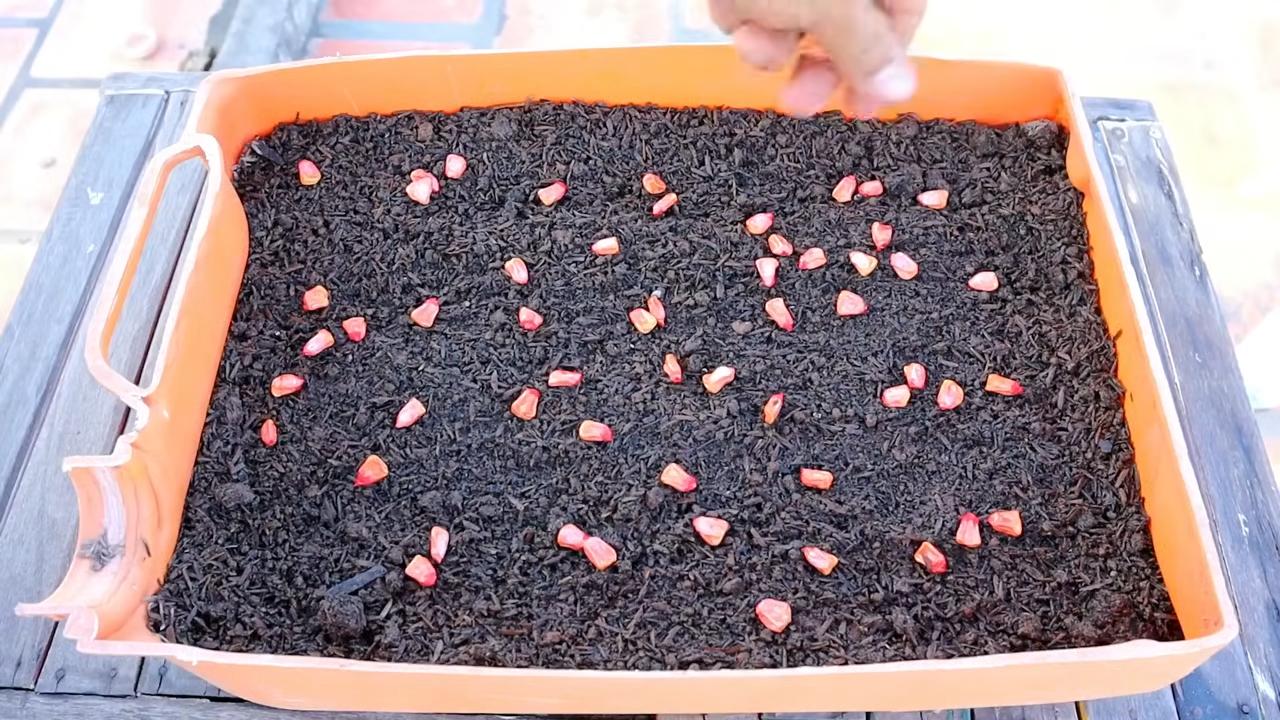
Conclusion
So, there you have it! Growing corn in pots might seem unconventional, but as we’ve explored, it’s a surprisingly rewarding and accessible project, even for those with limited garden space. The ability to cultivate your own sweet, juicy corn, fresh from your patio or balcony, is an experience that truly elevates the joy of home cooking.
This isn’t just about convenience; it’s about connection. Connecting with the food you eat, understanding the process from seed to table, and experiencing the satisfaction of nurturing life. There’s something incredibly special about biting into an ear of corn you’ve personally grown, knowing the care and attention that went into every kernel.
But why is this DIY trick a must-try? Beyond the sheer enjoyment of homegrown corn, growing corn in pots offers several compelling advantages. It allows you to control the growing environment, protecting your plants from pests and diseases more easily than in a traditional garden setting. It extends the growing season, enabling you to start earlier indoors and potentially harvest later into the year. And, of course, it’s a fantastic way to maximize your yield in a small space, turning even the tiniest balcony into a miniature cornfield.
Don’t be afraid to experiment with different varieties of corn to find your favorites. While sweet corn is a popular choice, consider trying ornamental corn for a splash of color or popcorn varieties for a fun and unique snack. You can also adjust the size of your pots to accommodate different numbers of plants, keeping in mind that corn plants need adequate space to thrive.
Consider these variations to personalize your corn-growing experience:
* **Companion Planting:** Plant basil or beans around your corn stalks to deter pests and improve soil health.
* **Succession Planting:** Stagger your planting dates to ensure a continuous harvest throughout the season.
* **Vertical Support:** If your corn plants become top-heavy, provide support with stakes or trellises.
* **Fertilizer Experimentation:** Try different types of fertilizers to see which yields the best results for your specific growing conditions. Organic options like compost tea or fish emulsion can be particularly beneficial.
Ultimately, the success of growing corn in pots depends on your willingness to learn, adapt, and experiment. Don’t be discouraged if you encounter challenges along the way. Every mistake is an opportunity to learn and improve your techniques.
We wholeheartedly encourage you to give this DIY trick a try. It’s a fun, educational, and ultimately delicious way to connect with nature and enjoy the fruits (or rather, vegetables) of your labor. And most importantly, we want to hear about your experiences! Share your photos, tips, and challenges in the comments below. Let’s create a community of pot-grown corn enthusiasts and learn from each other’s successes and failures. Your insights could be invaluable to other aspiring corn growers. So, grab your pots, seeds, and soil, and get ready to embark on a rewarding journey of homegrown corn! Let us know how your **growing corn in pots** goes!
Frequently Asked Questions (FAQ)
What is the best type of corn to grow in pots?
While you can technically grow any type of corn in a pot, sweet corn varieties are generally the most popular and successful for container gardening. Look for shorter, more compact varieties that are specifically bred for container growing. These varieties tend to be more manageable and less prone to toppling over in windy conditions. Some excellent choices include ‘On Deck’, ‘Golden Bantam’, and ‘Trinity’. However, don’t be afraid to experiment with other types of corn, such as ornamental corn or popcorn varieties, to see what works best for you and your growing conditions. Just be sure to choose varieties that are relatively short and sturdy.
How big of a pot do I need for growing corn in pots?
The size of the pot is crucial for successful corn cultivation. Corn plants have extensive root systems and require ample space to grow and thrive. As a general rule, you’ll need a pot that is at least 12 inches in diameter and 12 inches deep for each plant. However, larger pots are always better, as they provide more room for root growth and help to retain moisture. A 5-gallon pot is a good starting point, but a 10-gallon pot or larger would be even better. If you’re planning to grow multiple corn plants in the same pot, make sure to choose a container that is large enough to accommodate all of them without overcrowding. Overcrowding can lead to stunted growth, reduced yields, and increased susceptibility to pests and diseases.
What kind of soil should I use for growing corn in pots?
Corn plants need well-draining, nutrient-rich soil to thrive. A good potting mix is essential for providing the necessary support, drainage, and nutrients. Avoid using garden soil, as it tends to be too heavy and compact for container gardening. Instead, opt for a high-quality potting mix that is specifically formulated for container plants. You can also amend your potting mix with compost or other organic matter to improve its fertility and drainage. A mixture of equal parts potting mix, compost, and perlite or vermiculite is a good starting point. The perlite or vermiculite will help to improve drainage and aeration, while the compost will provide essential nutrients.
How often should I water my corn plants in pots?
Corn plants are heavy drinkers and require consistent watering, especially during hot and dry weather. Check the soil moisture regularly and water whenever the top inch or two feels dry to the touch. Be sure to water deeply, allowing the water to drain out of the bottom of the pot. Avoid overwatering, as this can lead to root rot. The frequency of watering will depend on several factors, including the size of the pot, the weather conditions, and the type of potting mix you’re using. As a general rule, you’ll need to water your corn plants more frequently during hot, sunny weather than during cool, cloudy weather.
How much sunlight do corn plants need?
Corn plants need at least 6-8 hours of direct sunlight per day to thrive. Choose a location for your pots that receives plenty of sunlight throughout the day. If you’re growing your corn plants indoors, you may need to supplement with artificial lighting, especially during the winter months. A grow light can provide the necessary light intensity to support healthy growth.
Do I need to fertilize my corn plants in pots?
Yes, corn plants are heavy feeders and require regular fertilization to produce a good yield. Use a balanced fertilizer that is specifically formulated for vegetables. Follow the instructions on the fertilizer package carefully, and avoid over-fertilizing, as this can damage the plants. You can also supplement with organic fertilizers, such as compost tea or fish emulsion, to provide additional nutrients. Fertilize your corn plants every 2-3 weeks during the growing season.
How do I pollinate corn plants in pots?
Corn plants are wind-pollinated, meaning that they rely on the wind to carry pollen from the tassels (the male flowers at the top of the plant) to the silks (the female flowers that emerge from the developing ears of corn). In a container garden, where there may not be enough wind to facilitate pollination, you may need to hand-pollinate your corn plants. To hand-pollinate, gently shake the tassels over the silks to release the pollen. You can also use a small paintbrush to collect pollen from the tassels and transfer it to the silks. Repeat this process every day for several days to ensure that all of the silks are pollinated.
How do I know when my corn is ready to harvest?
The best way to tell if your corn is ready to harvest is to check the silks. When the silks turn brown and dry, it’s a sign that the corn is ready to be picked. You can also gently peel back the husk and check the kernels. The kernels should be plump and milky when pierced with a fingernail. If the kernels are too hard or dry, the corn is overripe. If the kernels are too small and watery, the corn is not yet ripe.
Can I grow corn in pots indoors?
Yes, you can grow corn in pots indoors, but it requires a bit more effort and attention than growing it outdoors. You’ll need to provide adequate light, either through a sunny window or with artificial grow lights. You’ll also need to hand-pollinate the corn plants, as there won’t be any wind to facilitate pollination indoors. Additionally, you’ll need to monitor the soil moisture carefully and water as needed. While it’s possible to grow corn indoors, it’s generally easier and more rewarding to grow it outdoors, if possible.
What are some common pests and diseases that affect corn plants in pots?
Some common pests that can affect corn plants include aphids, corn earworms, and spider mites. Diseases that can affect corn plants include corn smut and leaf blight. To prevent pests and diseases, keep your corn plants healthy and well-nourished. Inspect your plants regularly for signs of pests or diseases, and take action promptly if you notice any problems. You can use organic pest control methods, such as insecticidal soap or neem oil, to control pests. For diseases, you may need to use a fungicide.


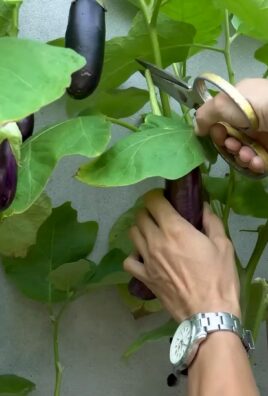
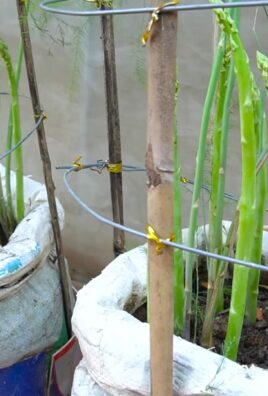
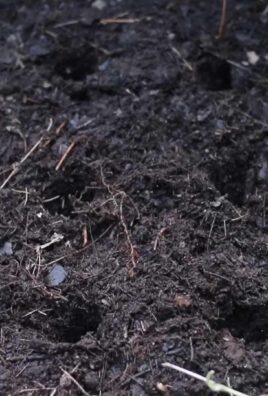
Leave a Comment